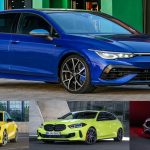The new Haval Jolion HEV is a great example of what the near future of the automotive scene in South Africa could look like – marrying the benefits of electric and petrol vehicles into a single entity.
I spent a week behind the wheel of the range-topping Super Luxury model, and by the end, I felt like I’d only scratched the surface of what it has to offer.
The best of petrol and electricity
The HEV – which stands for Hybrid Electric Vehicle – does not need to be plugged into a wall socket to charge its electrical systems like what is necessary with a plug-in hybrid.
The crossover is therefore predominantly powered by a 1.5-litre petrol engine, but this works in tandem with a small electric motor and a 1.6kWh battery pack for a combined output of 140kW and 375Nm.
The chief advantage of this system is that the Jolion will automatically switch between petrol and battery-assisted driving modes depending on how hard it’s being pushed, which can lead to impressive fuel savings.
At low speeds, the HEV is for all intents and purposes an electric vehicle, but once you start pushing past the 30-40km/h mark the petrol unit will take over operations for a more traditional driving experience.
Counterintuitively, this means that highway driving, where you are essentially driving a normal 1.5-litre SUV, is less efficient than low-speed driving in heavy traffic, where electricity is doing all the work.
In my week with the Jolion I experienced the usual morning and evening rush hour traffic, made even worse by load-shedding and the many closed roads in Centurion, and I also spent the weekend touring the province, making stops in places like Hartbeespoort and Sandton.
I played around with the various driving modes, including Normal, Eco, and Sport, and made use of the one-pedal driving function to maximize the amount of energy recovered by the regenerative brakes.
With these actions, the Jolion’s average fuel consumption by the end of the week came to just 4.2l/100km.
On the N1, the petrol engine consumed about 7.5l/100km, which is reasonable for a vehicle in this bracket, but the whole process illustrates how much fuel can be saved by incorporating hybrid technology.
More quality of life touches is that the HEV is able to provide an extensive breakdown of its performance after every trip, compiling a series of bar graphs that show how much it was relying on petrol or electric power.
It’s also possible to keep track of the systems using the digital driver screen, though a major irritation is that you cannot cycle through the various displays while the lane-keep assist is on, and it re-activates this feature every time you start the engine.
Once figuring out how to circumvent this issue, I was able to set a variety of useful infographics like a trip monitor, a 3D graphic of how energy is being distributed, or a rev counter showing that I was indeed at 0rpm while cruising at low speeds.
The benefits of the semi-electric drivetrain are not limited to frugality, though, as the Jolion delivers great acceleration in the low, mid, and high range, allowing for quick starts off the line and cheeky overtakes on the open road.
Gear changes are handled by a dedicated hybrid transmission, which works well enough. In fact, whatever delays I did experience seemed less about the gearbox and more to do with when the drivetrain was transitioning between power modes, which is only an issue in the mid-range.
For the tech heads
To say that the HEV is complicated is a bit of an understatement; it’s packed to the brim with features but accessing many of them can be a confusing learning process.
The biggest issue is that the vast majority of its functions are accessed via the infotainment screen, resulting in dozens of sub-menus that need to be sorted through.
There are no physical buttons for things like the driving modes, heated seats, or climate control (though the latter does at least have a shortcut button), making it a pain to activate these things on the move.
The aforementioned lane-keep assist is another gripe, as it’s very quick to fight your steering inputs and it also overrides other functions of the driver’s screen.
The infotainment system is an appreciably large 12.3 inches, but the small on-screen shortcuts are all located on the left side, making it a bit awkward to reach for them while driving.
It’s not all bad though, as the media screen itself is high quality with a number of customization options, offering a change in colour scheme, swap of wallpapers, and additional elements like a classy-looking analogue clock.
It’s easy to navigate through your music library, too, and there’s Apple CarPlay and Android Auto if you need them.
The cabin itself is spacious with very comfortable artificial leather seats, and there’s a good amount of storage space with a closable cupholder area and a shelf underneath the centre console.
You also get a wireless phone charger and a panoramic sunroof, as well as a heads-up display which can keep track of your speed, the adaptive cruise control, lane-keep assist, speed signs, phone notifications, and even whether or not a passenger has their seatbelt on.
An excellent all-round camera system is another plus, letting you enable guidelines and pick one of 12 different camera angles for exceptionally easy parking.
Final thoughts
Electric cars are still years away from being the norm in South Africa, even before we consider factors like Eskom, yet the rest of the world is rapidly moving towards a greener future.
Hybrids are feasibly the best way for locals to keep up with the industry moving forward, and it’s in this regard that the Haval Jolion has the potential to stand out as one of the very best.
It starts at R549,950, which is pretty good value for money for a hybrid even before you consider the amount of kit that comes with it, and it’s fun and easy to drive with its light steering and new-energy performance.
It has its annoyances, particularly its overreliance on the touchscreen, but the HEV makes an excellent case as to why you should be excited by the prospect of electrified transport.
Haval Jolion HEV
Get South Africa’s latest entrepreneurial or business success stories delivered right to your inbox — Sign up to Entrepreneur Hub SA’s newsletter today

eBook: 50 South African Entrepreneurs Reveal HOW THEY MADE IT




















